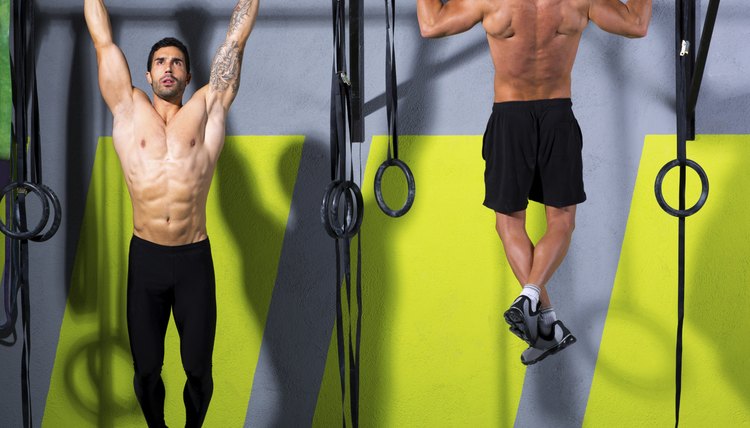What does fact checked mean?
At SportsRec, we strive to deliver objective content that is accurate and up-to-date. Our team periodically reviews articles in order to ensure content quality. The sources cited below consist of evidence from peer-reviewed journals, prominent medical organizations, academic associations, and government data.
The information contained on this site is for informational purposes only, and should not be used as a substitute for the advice of a professional health care provider. Please check with the appropriate physician regarding health questions and concerns. Although we strive to deliver accurate and up-to-date information, no guarantee to that effect is made.
Why Do Pull Ups Give Me a Headache?

Pullups are a body-weight exercise that develops upper-body strength in the pulling muscles of the back, shoulders and arms. The most common sources of pullup-induced headaches are incorrect breathing techniques, poor exercise form and improper body positioning. These poor lifting practices can lead to muscle tension headaches, or cervico-genic headaches. Other sources of exercise-induced headaches include low blood sugar, dehydration and overtraining.
Proper Pullup Technique
Grip the pullup bar with both palms facing forward and hang downward until your arms are straight. Get a neutral spine position by squeezing the pelvic floor muscles as if trying to hold back from urinating. Retract your shoulder blades by pinching the lower inner corners toward each other. You should maintain this position throughout the entire set; this position keeps your feet hanging straight down. Performing these bio-mechanically correct pullups in combination with maintaining correct neck positioning should help prevent undue muscle strain and pullup-induced headaches.
Neck Positioning
Hold your head and neck in a neutral position while executing pullups or chinups. In the neutral position, your head is straight and your eyes should be looking straight ahead. Maintain your head and neck in line with the spine. Your neck should not be bent backward or hanging forward, not be bent right or left, not be turned to either side, and not jut forward or be pushed backward. Holding your neck in a neutral position protects the neck from over-straining and allows the muscles to work symmetrically.
Headaches
In medical terms, the neck is called the cervical spine. Cervico-genic headache means the source of the headache stems from the neck. Muscle tension headaches are caused by taut neck muscles pulling on the skull. Improper neck positioning, unsymmetrical pull of the neck muscles on the spine and spasm of the muscles lead to muscle tension and cervico-genic headaches.
Breathing
Incorrect breathing can cause headaches associated with pullups. Holding your breath while straining increases intercranial pressure, thus increasing the possibility of head pain. The correct breathing technique while performing pullups is exhaling through your mouth while pulling yourself up and inhaling through your nose while lowering yourself.
Solutions
Prevent headaches from low blood sugar while exercising by consuming healthy calories before training and eating a small healthy snack during long training sessions. You can prevent headaches caused by lack of hydration by sipping healthy fluids while working out. The solution to preventing headaches from overtraining is to gradually increase your workout frequency, duration and intensity.
Explore In Depth
References
- University of Maryland Medical Center: Tension Headache
- American Council on Exercise: Pull-ups
- "Living Well with Migraine Disease and Headaches"; Robert; 2004
Writer Bio
Dr. Donald A. Ozello, D.C., is the owner and treating doctor of chiropractic at Championship Chiropractic in Las Vegas, Nevada. He is a writer for MyHealthZine.com, The Las Vegas Informer, SpineUniverse.com, "OnFitness Magazine" and various other print and online publications.
